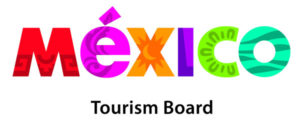by Guest Blogger, Cigall Goldman, of MazelMoments
A wedding is more than just a party, but a merging of two lives, families and sometimes religions. Interfaith weddings offer ways to blend a couple’s faith and cultures, creating a unified start to their life together. Whether it’s deciding on who officiates the ceremony, or discussing which traditional dances to have at the reception, finding a comfortable balance between both religions can be challenging. The good news is there are countless ways to mix traditions of other religions into a customary Jewish wedding. With innovative ideas like these listed below, planning an interfaith wedding will come fun and easy.
To highlight areas where two or more religions can be incorporated into a Jewish wedding, we used examples from Jewish-Christian weddings, Jewish-Hindu weddings, and Jewish-Chinese weddings. But the same can be applied regardless of which faiths are being represented.
Cross-Cultural Ketubahs
The ketubah (Jewish marriage contract) is becoming more and more popular with couples of all cultures and religions. Who wouldn’t want their marriage vows transformed into a customized work of art?! This personalized artistic expression of the couple’s commitment to each other makes it an ideal place to express both faiths. Have the couple choose symbols, colors and languages from both cultures creating a meaningful piece of art that forever represent their marriage.
Multi-Cultural Wedding Canopies
A chuppah, or wedding canopy, is rooted in the Jewish culture but can provide a warm setting for any ceremony. The chuppah has become a ceremony statement piece, and is the perfect area to showcase additional cultures. Some ideas include:
• When planning a Jewish-Hindu wedding, use a sari instead of the traditional tallit.
• Create an altar covering decorated with candles and flowers for a Christian interfaith wedding.
• Drape red silk around the chuppah poles to honor the symbolic Chinese color.
Like all decisions in an interfaith wedding, encourage the couple to decide who will join them under the chuppah based on their own preferences.
Attire
Western wedding attire often includes a white gown for the bride and a suit or tux for the groom. As a planner, give brides the following advice for their inter-cultural wedding:
• Consider pairing the dress with Indian jewelry and adding Tikka-styled accessories or color schemes to the groom’s traditional look for a Hindu-Jewish ceremony.
• In Chinese culture, the bride changes her wardrobe several times. Having two dresses is a growing trend at western weddings as well, making this an easy tradition to incorporate. Blend the two cultures by considering a red option for the bride’s second dress, adding red accents to both bride and groom’s reception attire, or giving the groom a more eastern-inspired ensemble for the party.
Breaking the Glass
A Jewish wedding is sealed by the groom or couple breaking the glass. Using glass colored in Chinese red or bright Hindu hues bring both cultures into this Jewish ritual. The breaking glass can also include symbols from other faiths. After the wedding, the glass shards can be used to make a mezuzah, becoming a bi-cultural blessing for their new home. After the glass is broken, instruct guests to say not only “Mazel Tov” but also “Gong Xi” or “Shaadi Mubarak” to express congratulations in both languages.
Officiants
Opting to have two religious leaders co-officiate an interfaith ceremony is an excellent way to incorporate the couple’s backgrounds into the wedding. The couple can also choose to be married by a secular officiant well versed in the traditions of both faiths. Another option is to have two entirely separate ceremonies that showcase the traditions of each culture.
Reception
The wedding reception provides the perfect opportunity to showcase the unique cultures in a personalized and memorable way. Be creative in giving the couple inspiration that incorporates both of their cultures into the decor, food and drink, music, entertainment and favors.
It’s important to remind couples having an interfaith wedding that it’s their wedding at the end of the day. Brainstorm which rituals are most important to them as a couple and individually, and find a way to work those priorities into the ceremony. There’s no wrong way to approach it and there are endless creative options, guaranteeing that the traditions they value most can be present in their big day.
Cigall Goldman is the founder of Mazelmoments.com, the award-winning website that makes it easy and fun to plan any Jewish inspired event including a wedding, bar & bat mitzvah or baby celebration. At mazelmoments, find your perfect venue, photographer, décor, invitations, music & entertainment and more! The mazelmoments blog keeps you up to date on the latest trends, and shares expert advice to help you create an unforgettable celebration!










[…] fabulous client’s talents featured! MazelMoments’ owner Cigall Goldman shared her expertise on The Wedding Planners Institute of Canada Inc. (WPIC) earlier this week with “Blending Religions for Interfaith Jewish Weddings.” With Cigall’s […]